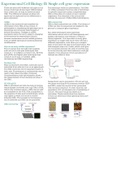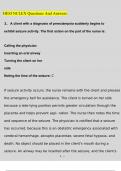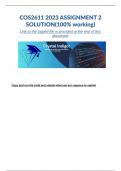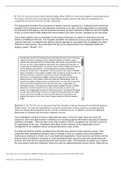Summary
Summary Cell Biology Single-cell Gene Expression
- Course
- Institution
This document provides a summary of the lecture Single-cell gene expression. Topics that are discussed are: mRNA, mRNA expression, Northern blot, qPCR, RNA sequencing, DNA microarray, gene expression, single-cell gene expression analysis, High-throughput single-cell RNA analysis methods, Low throug...
[Show more]












